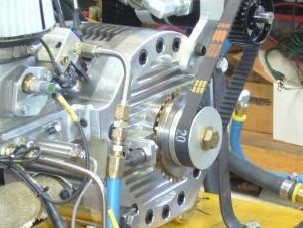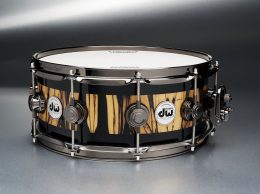GoTek revs up global plans as it secures rotary engine patent

Stephen Nellis
For years, Steve Herbruck and Scott Farrenkopf of Oxnard-based GoTek Energy have been slaving away to perfect a new internal combustion engine that would be lighter and simpler than piston designs and fuel agnostic, letting it burn anything from propane to gasoline and even hydrogen.
Now that the U.S. Patent & Trademark Office has granted GoTek Patent No. 8,733,317 B2 for its core DynaKinetic engine design, the whole world can see how the power plant works on the inside. So maybe, just maybe, the pair will stop getting the inevitable question that comes up when they tell people they’re working on a new rotary engine: “Oh, you mean a Wankel engine, like in a Mazda?”
Introduced in the 1960s and pushed by Mazda for decades, the Wankel engine initially held a lot of promise for providing smooth power in a light package. But it was never really perfected by any of the major automakers. The flagship model of recent years — the Mazda RX-7 and RX-8 sports car — had a reputation for wearing out seals and needing engine rebuilds.
GoTek’s detailed patent drawings make clear once and for all that its engine is definitively not a Wankel, or anything close to it. There’s no figure-eight-shaped chamber or triangular rotor. Instead, there’s a cylindrical chamber, a rotor shaped sort of like a swept-back throwing star with a system of rockers and internal gears. The result is a bit more complexity than we saw with the Wankel engine with vastly fewer problems. And at only 13 moving parts, the DynaKinetic engine is also far less complicated than traditional pistons.
“Felix Wankel did a wonderful job of sticking to his concept of ‘I want only one moving part that does the job.’ He succeeded in doing that, but there are some fundamental areas he sacrificed,” said Herbruck, GoTek’s CEO. “The torque and efficiency of the engine has been hindered because he stuck to his guns on that one moving part. We added a few parts to take care of those fundamentally hindering geometric circumstances.”
Several of the major automakers sunk money into improving the Wankel design and got incremental patents on those improvements, just as every minor tinker to the piston engine has been patented. But with its internal rockers,
GoTek is hoping its engine is a whole different beast and a new take on the rotary concept.
“It’s a core patent — it’s the structure of the engine. We feel very strongly about the coverage we got with this patent,” Herbruck said. “Everybody’s got this piece and that piece of the puzzle, but nobody could see the whole puzzle.”
Farrenkopf, an automotive industry veteran who serves as executive vice president, said the patent has been five years in the making. After being granted in the U.S., the patent should be headed toward approval soon in several other countries. Several other patents are in the works.

GoTek Energy’s recently patented rotary engine design. (courtesy photo)
The process has taken up many of the young firm’s resources, but it was necessary, Farrenkopf said.
“As a startup company, you’ve got to protect your intellectual property so other people can’t take it. When you’re doing something with as broad an application as an engine that has half a trillion dollars a year in market potential, there’s an awful lot of countries you need to cover,” he said. “We’ve focused our IP on key countries and key manufacturers around the world.”
The engine has a range of applications. Because of its design, it can run equally well on liquid or gaseous fuels, making it suitable for a variety of vehicles. And if force is applied to the main crankshaft from the outside, it can easily run as a pump or compressor. GoTek plans to focus on stationary engines and pumps and compressors first, since those markets can more easily adopt new technologies than the automotive sector, which can take years to shift gears.
The company is also working on intellectual property around the manufacturing process itself, which it intends to license along with the core engine design. The last thing Herbruck and Farrenkopf want is for the engine to get a bad reputation because of poorly manufactured examples.
“Depending on the market, we will produce it or we will license it,” Farrenkopf said. “We’ll create one manufacturing line, then we’ll license for the right markets for both the product and process together.”
In the end, engines will probably be produced where they’ll be used: U.S.-destined engines will be made in the U.S., China-destined engines will be made in China, and so on. While GoTek hasn’t ruled out other states or locales for its first manufacturing line, the company’s leaders would prefer to keep it close to home.
“The ideal scenario would be for us all to stay here and put this manufacturing line right here in Ventura County,” Herbruck said.











